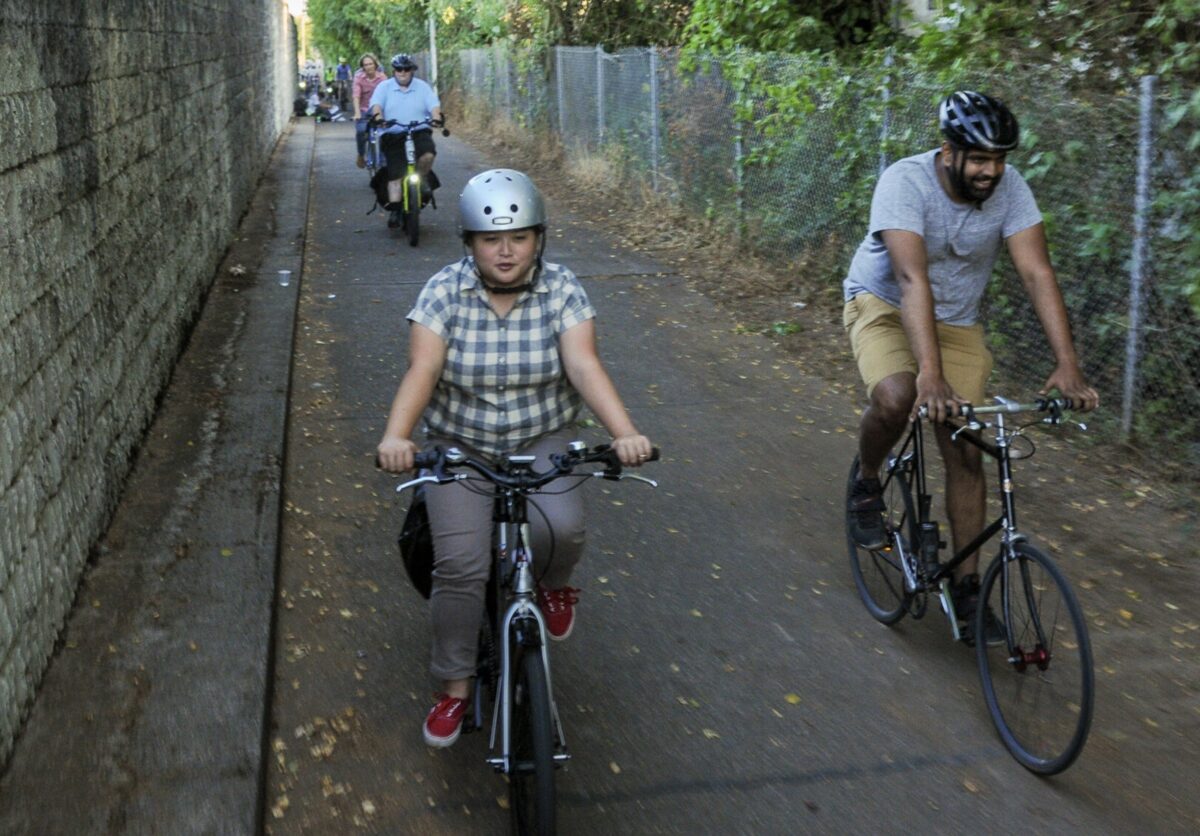
(Photo: Jonathan Maus/BikePortland)
The Oregon Department of Transportation has taken the wraps off a new program that will fund off-street path projects across the state.
The Oregon Community Paths program was first announced in February and ODOT has just released more details. Program manager Alan Thompson said he thinks there could be around $19.2 million up for grabs between federal and state sources through 2024, although that amount is “in flux” (likely a reference to ODOT’s pandemic-related budget crunch).
ODOT will pull together four funding sources — one from the federal government, three from the State of Oregon — to help plan and construct paths that are not on the roadway right-of-way. That stipulation is important because Highway Trust Fund, gas tax, and nearly every other major revenue source is legally required to be spent in the right-of-way.
As an example of the importance of this funding source, Thompson pointed out that state-funded Safe Routes to School projects are limited to being in the right-of-way. “So if there’s a potential path that goes from a housing development to a school, but it is not on a roadway right-of-way it would be ineligible for Safe Routes to School funding, but it would be eligible under this program.”
Advertisement
Funding sources that will feed into the Oregon Community Paths program are:
- Bicycle excise tax: A $15 tax on purchase of new bicycle which raised about $800,000 in 2019)
- Oregon State Lottery revenue
- Vehicle privilege tax: 0.5 of 1 percent tax on the retail price of new taxable vehicles.
- FHWA Transportation Alternatives Program funds
In order to be eligible, projects must, “improve a critical link, regional path or a path crossing of a roadway.” Thompson further defined those terms by saying a regional path is, “Made up of one or more connected segments that is primarily physically separated from the roadway, connects two or more communities [loosely defined, could be housing developments], with each community no more than 15 miles apart, or traverses through a single large community with a path that is 10 miles or longer” and that will, “Serve as a connection point for people within communities or is a part of an officially designated walking or bicycling route.”
And a “critical link” was defined as a section of path that, “Improves walking or biking access to high-need locations like transportation disadvantaged areas, schools, shopping or employment centers, medical services, connections to transit, regional paths and downtowns.”
For more information about this program, including key dates for letters of interest and grant applications, check out the official website.
— Jonathan Maus: (503) 706-8804, @jonathan_maus on Twitter and jonathan@bikeportland.org
— Get our headlines delivered to your inbox.
— Support this independent community media outlet with a one-time contribution or monthly subscription.


